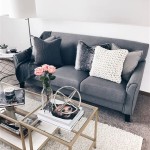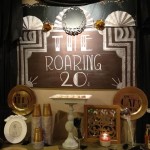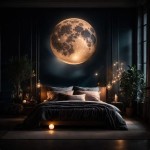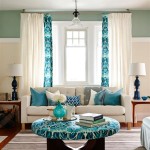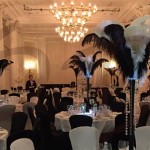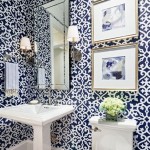Living Room 1970s Home Decor
The 1970s represent a distinct era in interior design, characterized by bold colors, textured fabrics, and a blend of natural and synthetic materials. Living rooms of this decade showcased a unique aesthetic, reflecting a shift towards casual comfort and self-expression. Understanding the key elements of 1970s living room decor allows for accurate historical representation or provides inspiration for contemporary interpretations of the style.
Color palettes played a crucial role in defining the 1970s aesthetic. Earthy tones such as avocado green, mustard yellow, burnt orange, and rust were prominent. These hues were often combined with contrasting shades like browns, beiges, and creams to create a warm and inviting atmosphere. Darker shades, such as chocolate brown and deep teal, were also popular, particularly for accent walls and larger furniture pieces.
Wall treatments in 1970s living rooms frequently featured textured elements. Wood paneling was a hallmark of the era, adding a rustic, natural feel to the space. Wallpaper, often in bold geometric patterns or floral designs, was another common choice. Textured plaster and brick were also used to create visually interesting surfaces.
Flooring in 1970s living rooms continued the emphasis on texture and natural materials. Shag carpeting, in various colors and pile heights, was a defining feature. This soft, plush flooring added a sense of comfort and warmth. Hardwood floors, often parquet, were also popular, offering a more polished look. These were sometimes partially covered with large area rugs, often featuring geometric or floral patterns.
Furniture in 1970s living rooms was characterized by large, comfortable pieces. Sectional sofas, often upholstered in textured fabrics like corduroy or velvet, were a staple. Low-slung armchairs and ottomans provided additional seating options. Coffee tables were often large and made of materials like glass, chrome, or wood.
Lighting played a key role in creating the desired atmosphere in 1970s living rooms. Floor lamps with oversized shades, often made of macrame or textured fabric, were popular. Table lamps with ceramic bases and fringed shades were also common. Track lighting, recessed lighting, and pendant lights provided ambient illumination. The use of various light sources allowed for flexible lighting arrangements to suit different moods and activities.
Textiles and accessories were essential in completing the 1970s living room look. Macrame wall hangings, woven tapestries, and crocheted throws added texture and visual interest. Cushions and throw pillows, often in contrasting patterns and textures, were used liberally to enhance comfort and add pops of color. Houseplants, particularly ferns and hanging plants, were a popular decorative element, bringing a touch of nature indoors.
A key characteristic of 1970s living room decor was the incorporation of conversational groupings. Furniture arrangements were designed to encourage interaction and create a relaxed, informal atmosphere. This frequently involved positioning seating around a central coffee table or fireplace, fostering a sense of connection and community within the space.
The use of natural materials played a significant role in the overall aesthetic. Wood, stone, and wicker were frequently incorporated into furniture, flooring, and decorative accessories. This emphasis on natural elements helped to create a warm and inviting atmosphere while reflecting a growing environmental awareness.
Window treatments in 1970s living rooms often featured long, flowing drapes, often in sheer fabrics or bold prints. These drapes added a sense of drama and elegance to the space. Blinds, particularly vertical blinds, were also popular, offering a more streamlined and modern option.
Artwork in 1970s living rooms frequently showcased abstract designs, bold geometric patterns, and landscapes. Large-scale paintings and prints were common, adding a focal point to the room. Sculptures, often in abstract forms and made from materials like ceramic or metal, were also popular decorative elements.
The entertainment center, often a prominent feature in 1970s living rooms, typically housed a television, stereo system, and record player. These units were often made of wood or laminate and featured built-in storage for media and accessories. The entertainment center served as a focal point for social gatherings and reflected the growing importance of technology in home entertainment.
Recreating or drawing inspiration from 1970s living room decor requires attention to detail and a thoughtful selection of elements. By understanding the key characteristics of the era, one can create a space that captures the essence of the 1970s, whether through a faithful reproduction or a contemporary interpretation of the style.

70s Living Room Ideas Gorgeous Decor

Worst Home Decor Ideas Of The 1970s Real Estate News Insights Realtor Com

I Believe In Sasquatch 70s Home Decor Retro Style Living Room Sunken

Why Are We Yearning For 70s Decor Again Architectural Digest

70s Living Room Ideas Gorgeous Decor

Smart Commune Photo Vintage Interior Design 70s Home Decor 1970s

The Best Decorating Trends From 70s Ideas

70s Living Room Ideas Gorgeous Decor

Worst Home Decor Ideas Of The 1970s Hinman Construction

The Top Home Decor Trends From 1970s Elle
